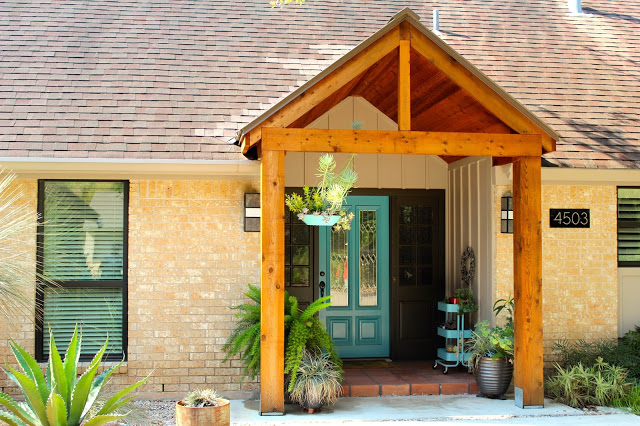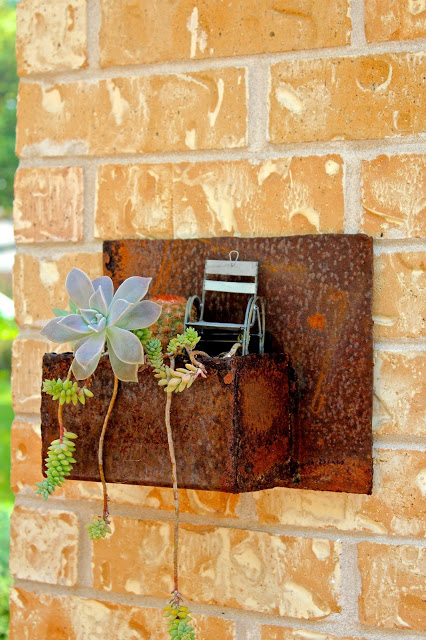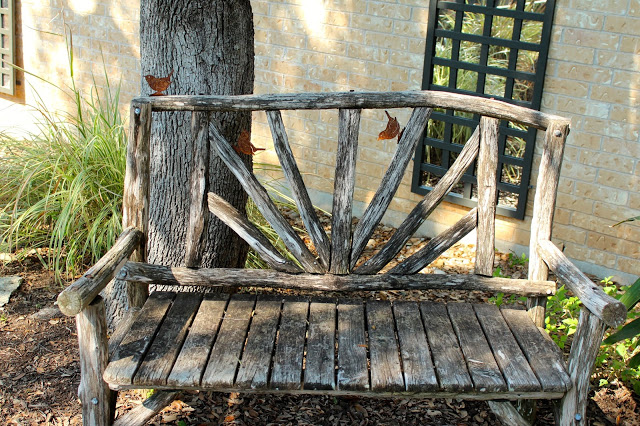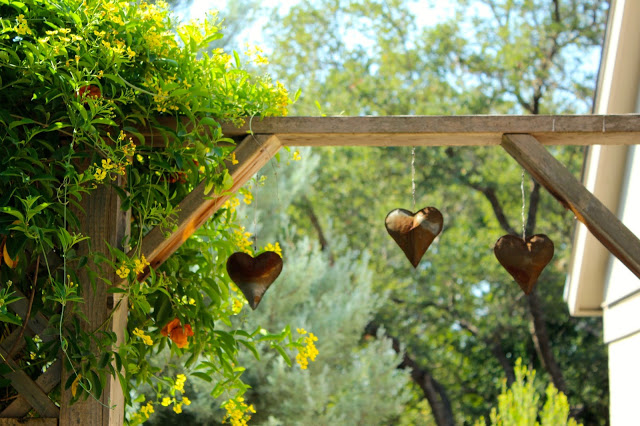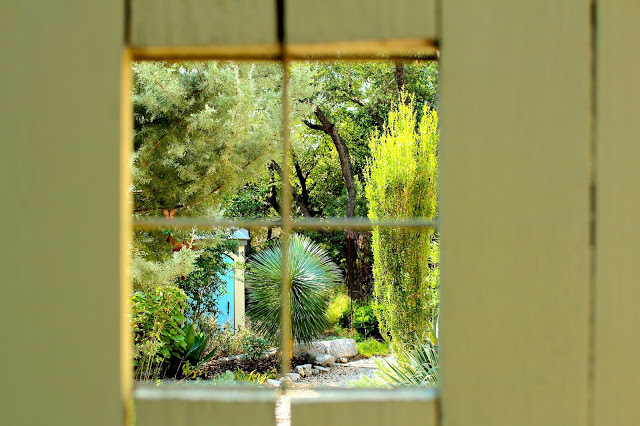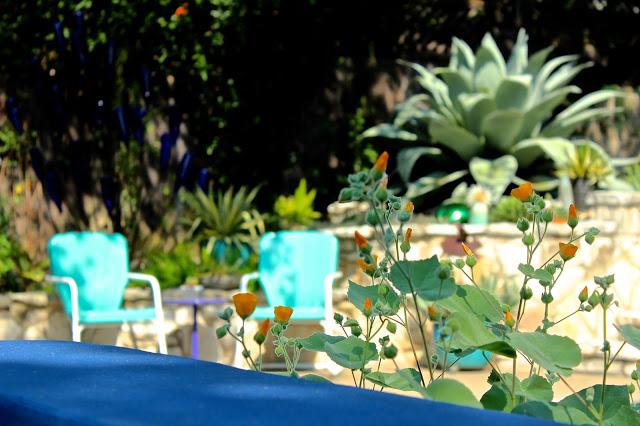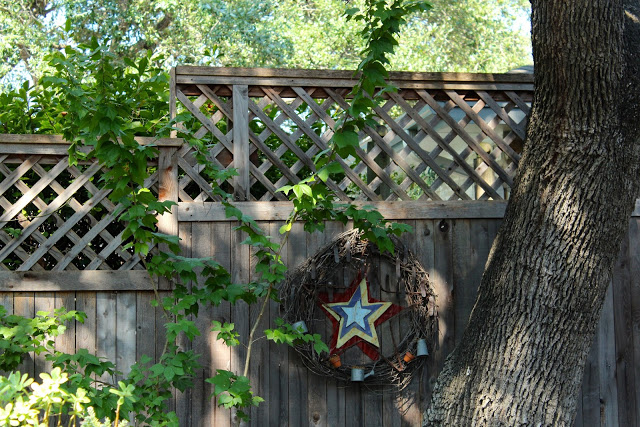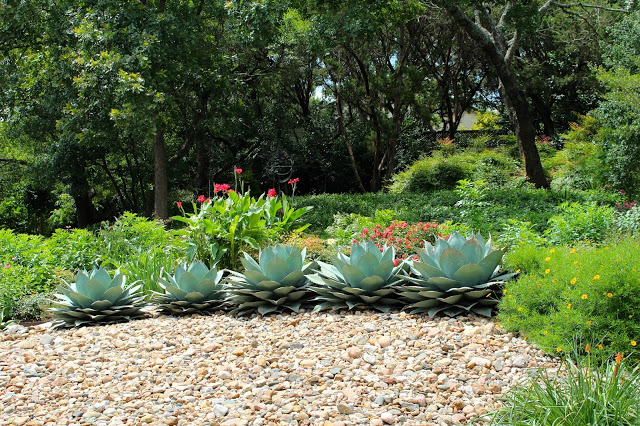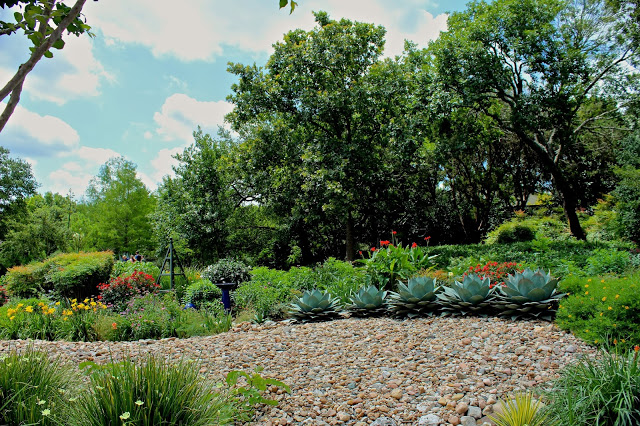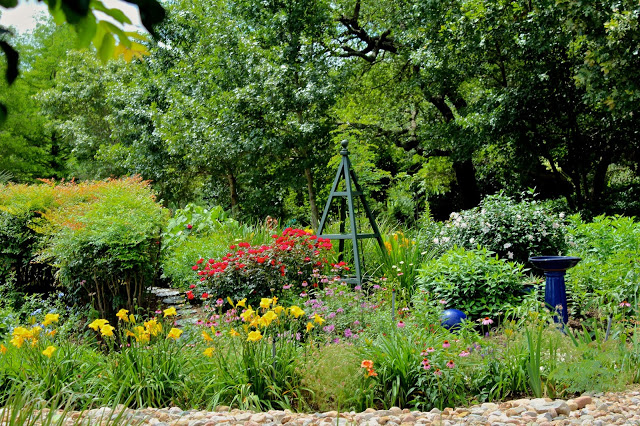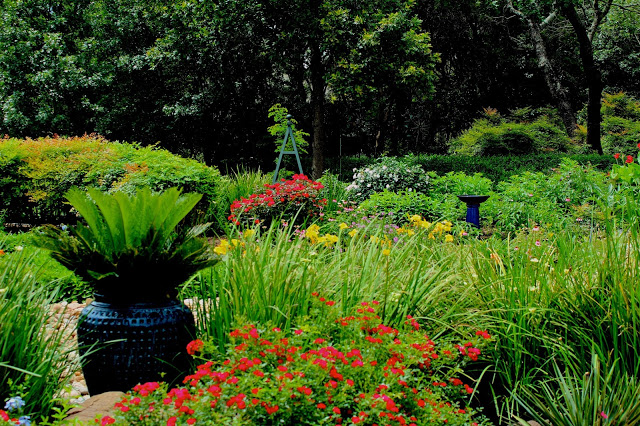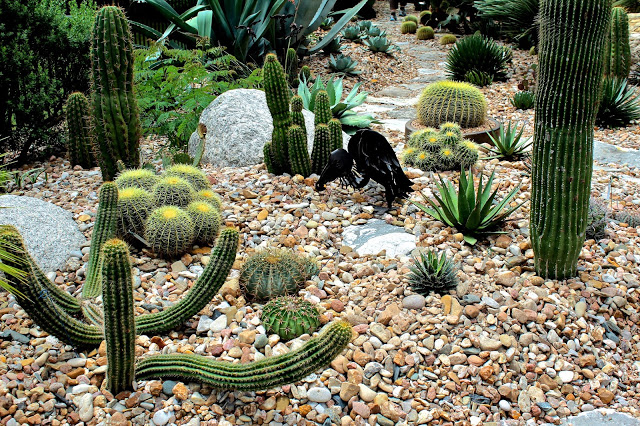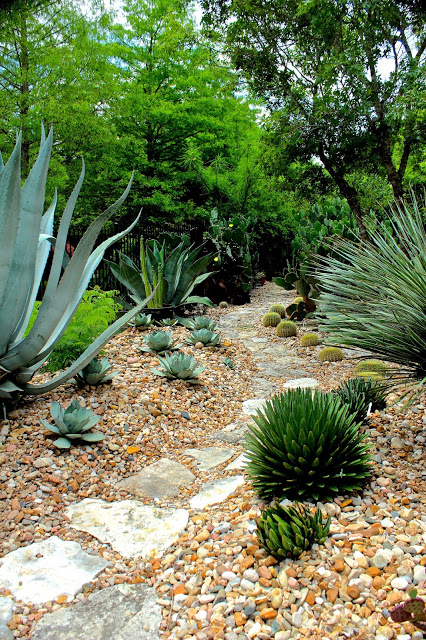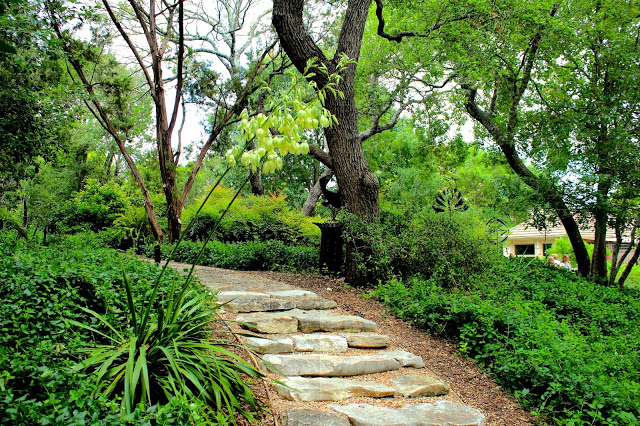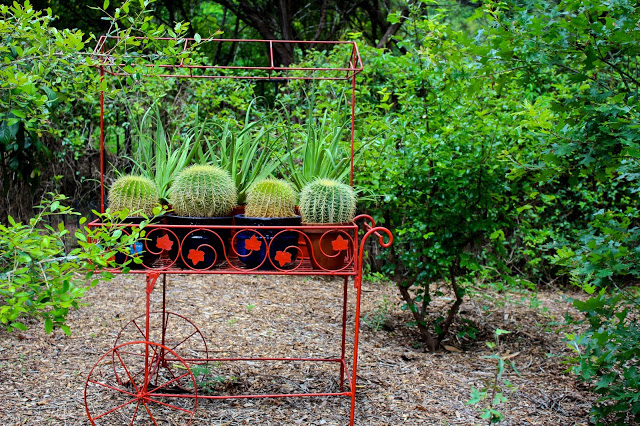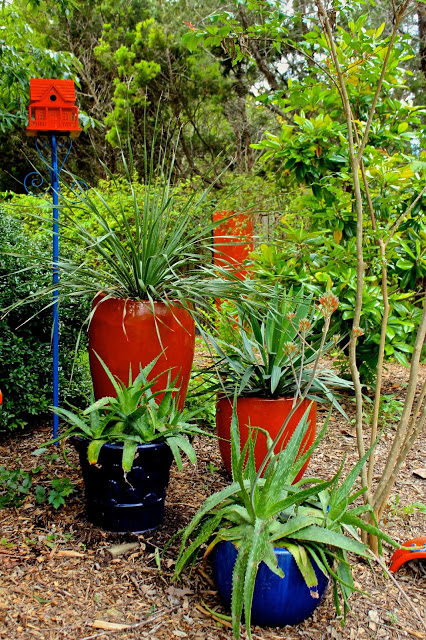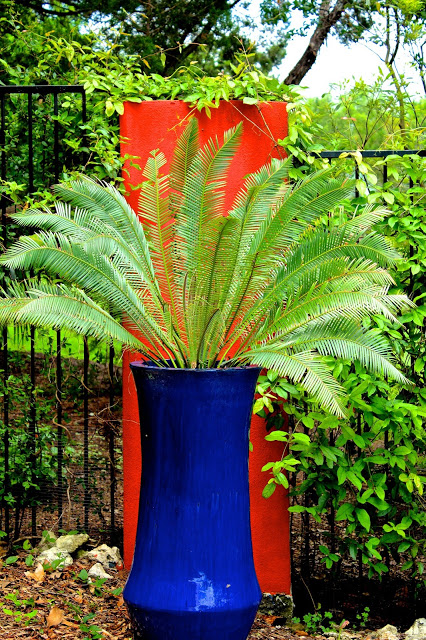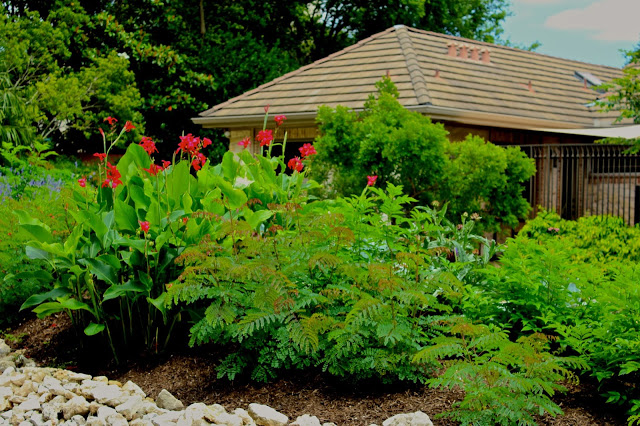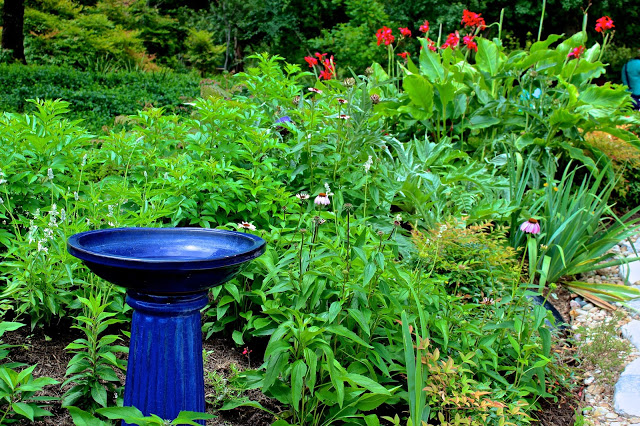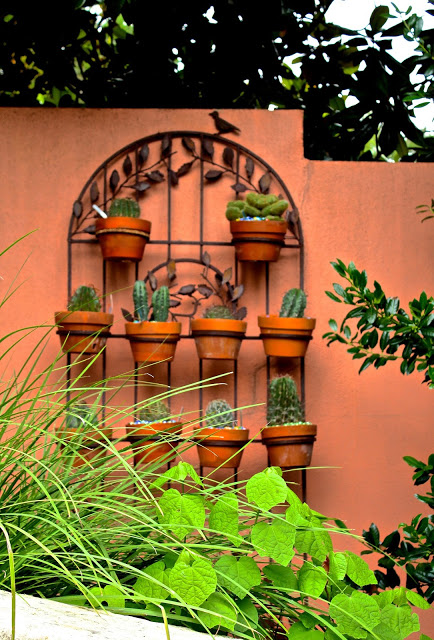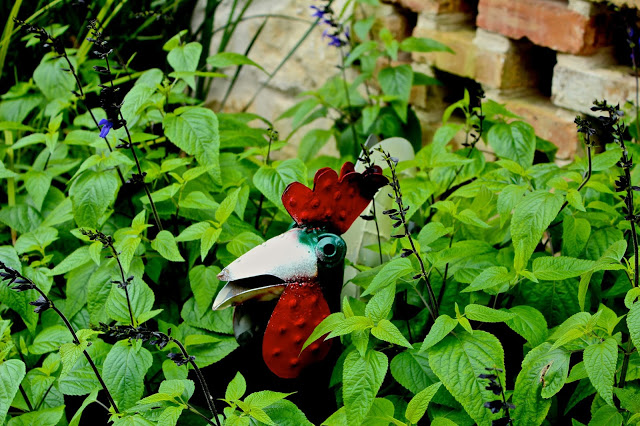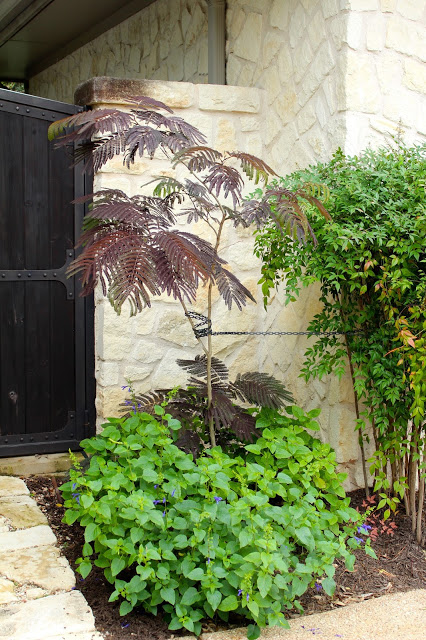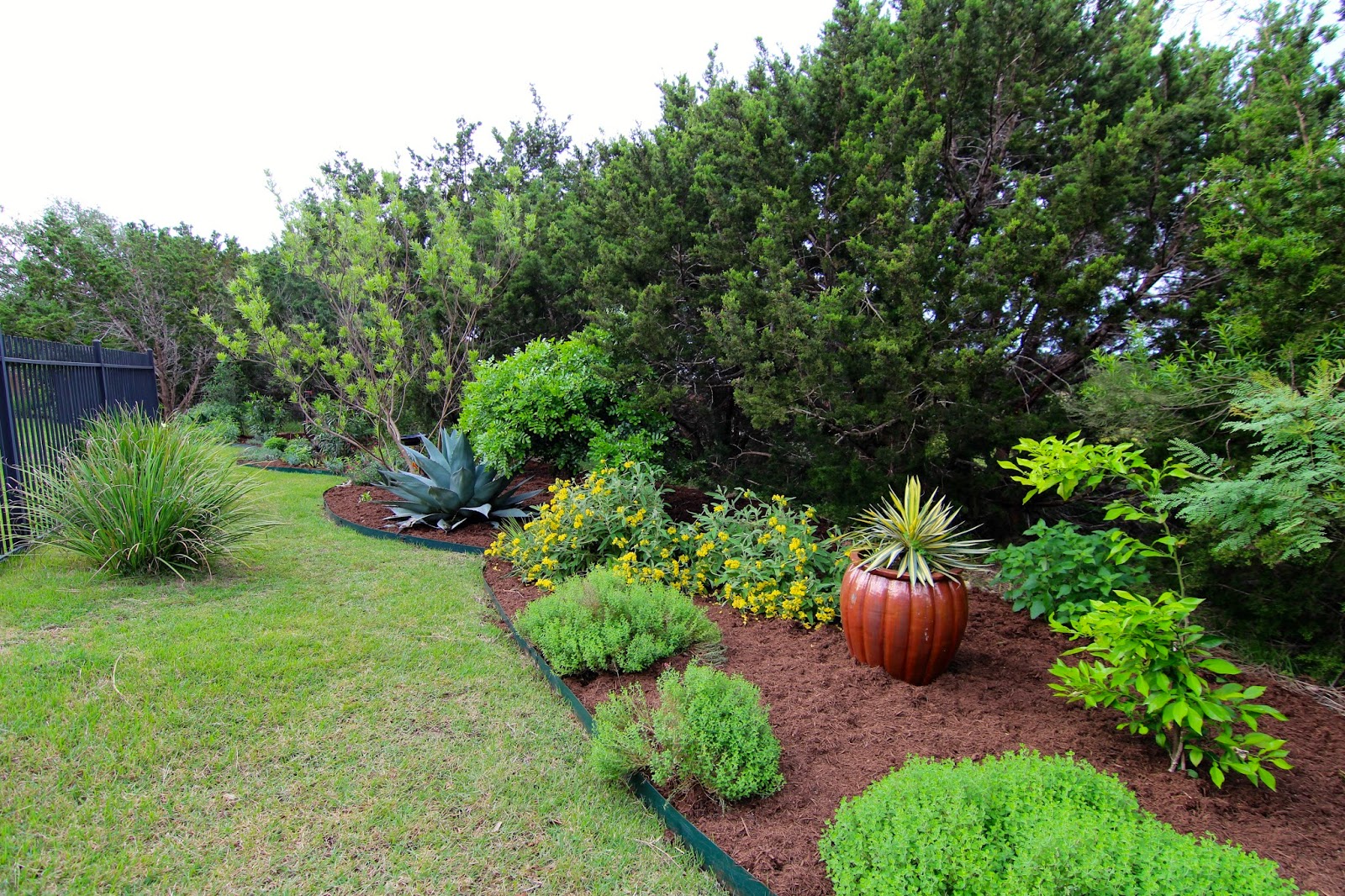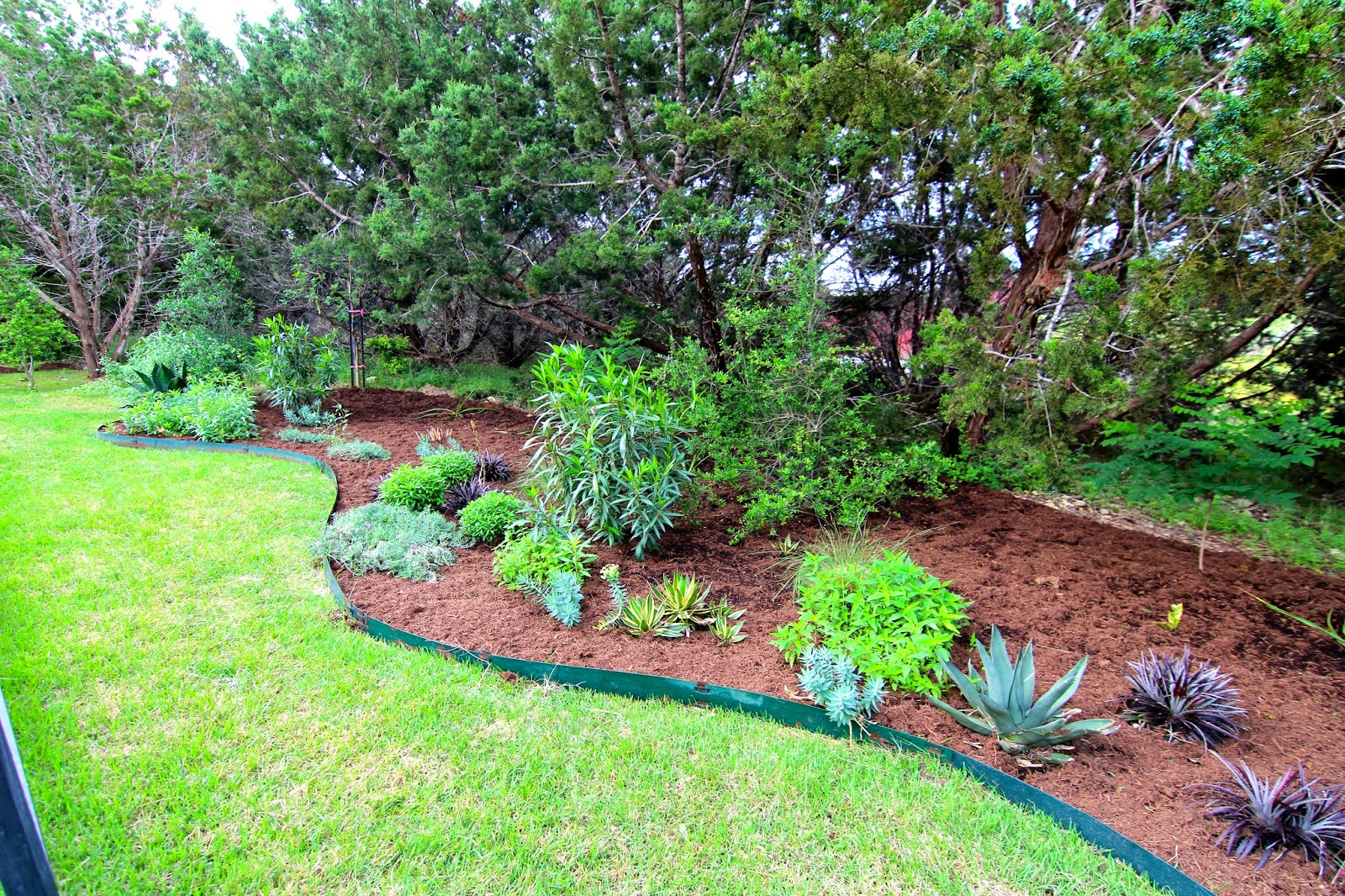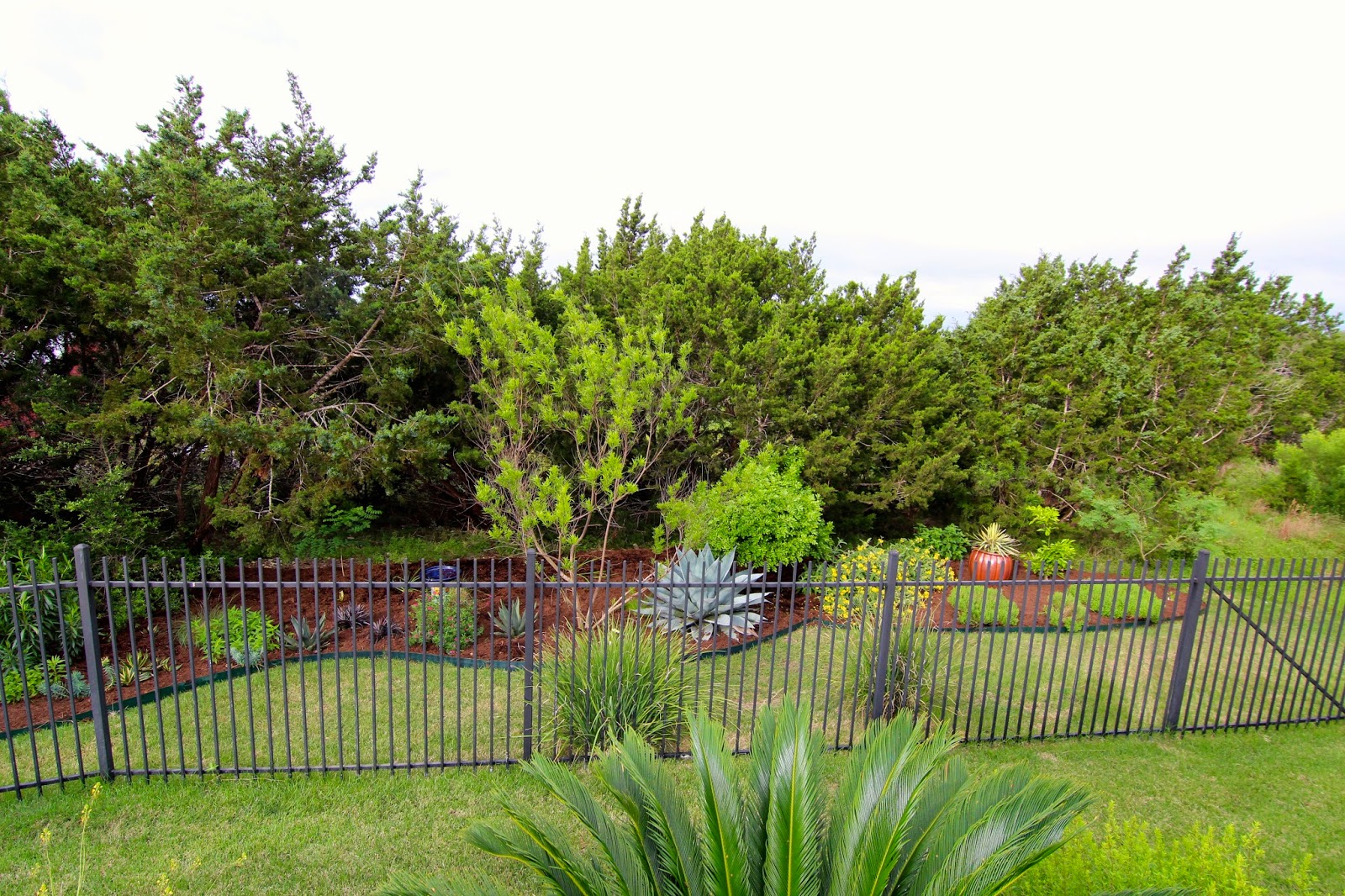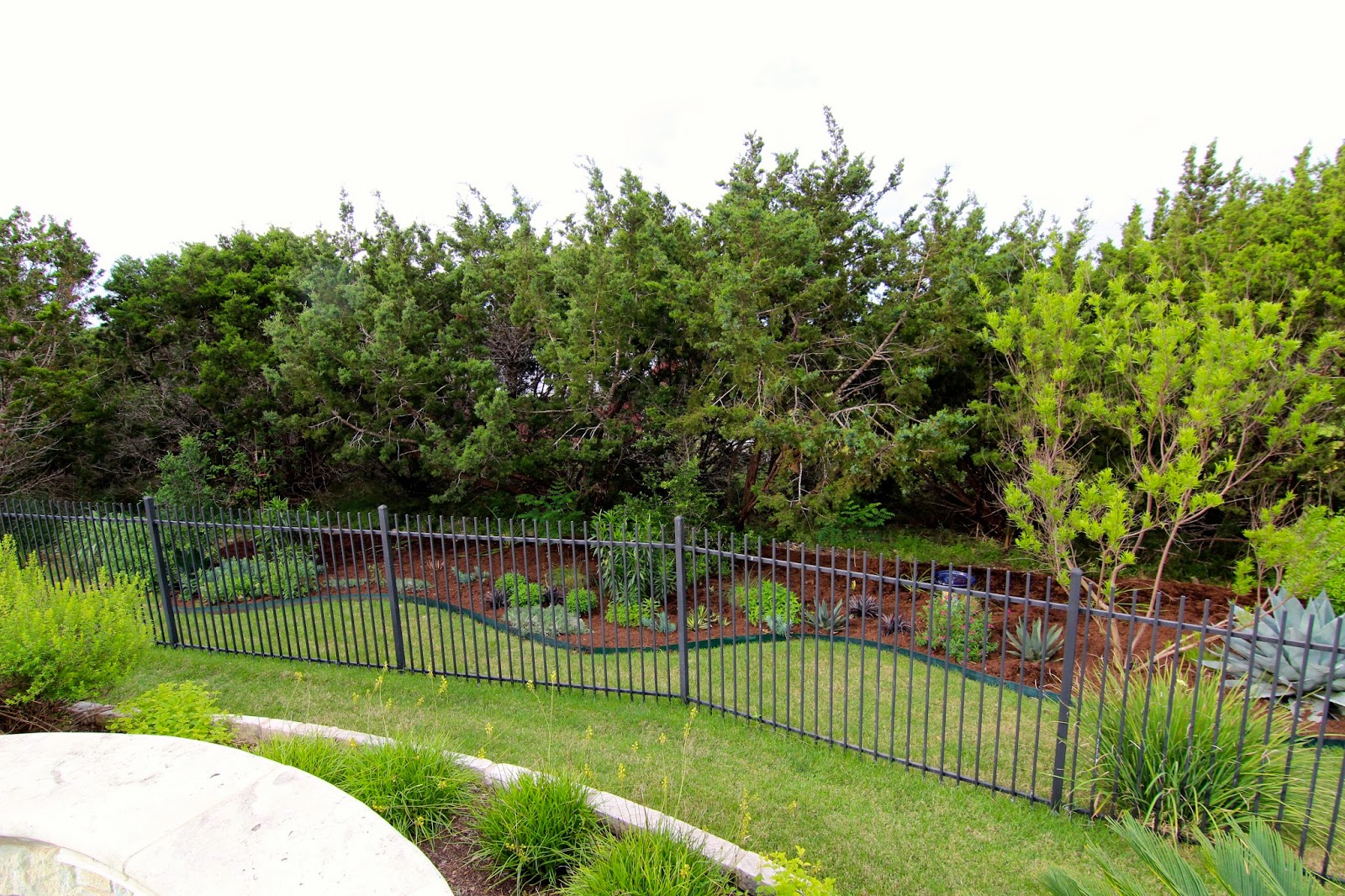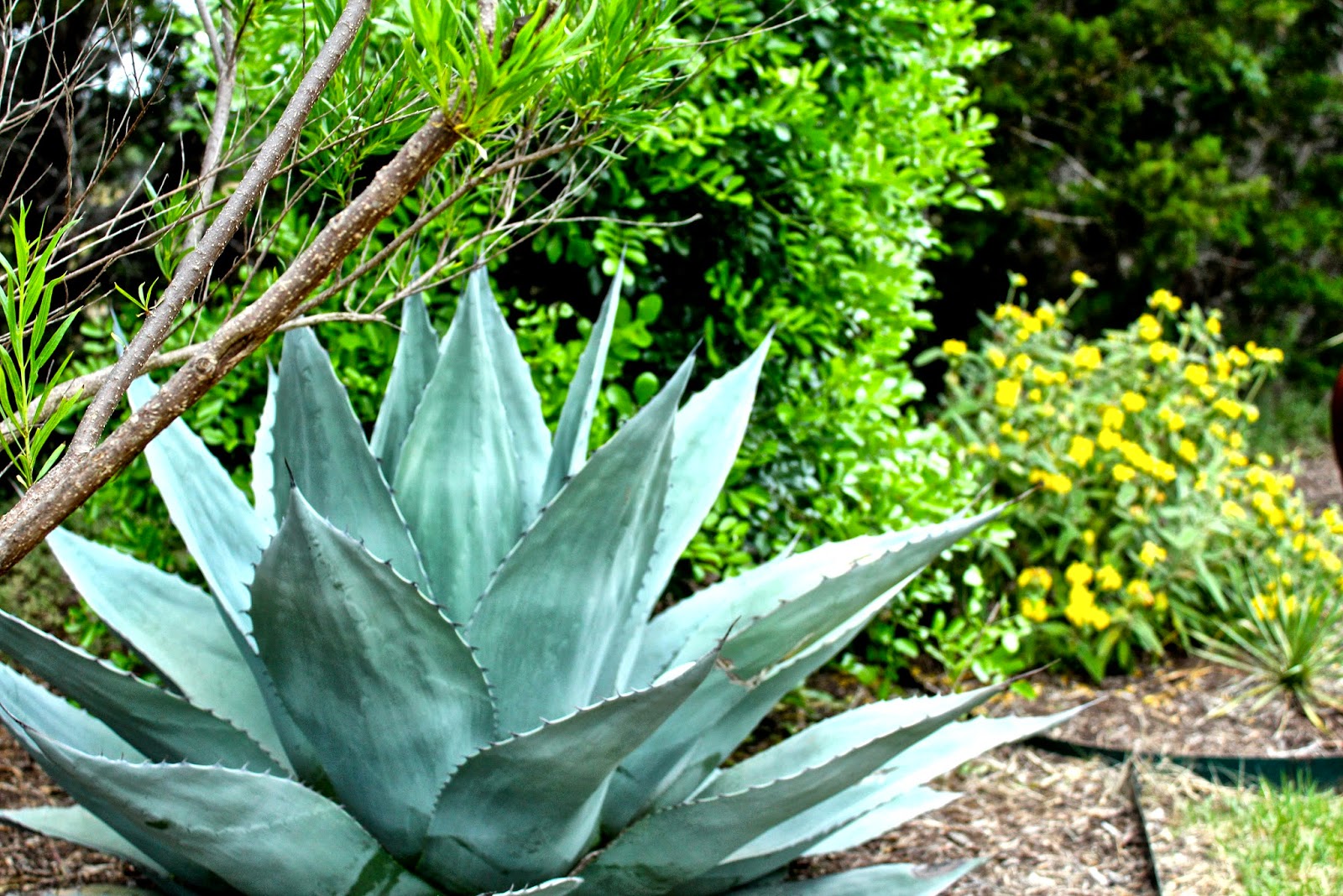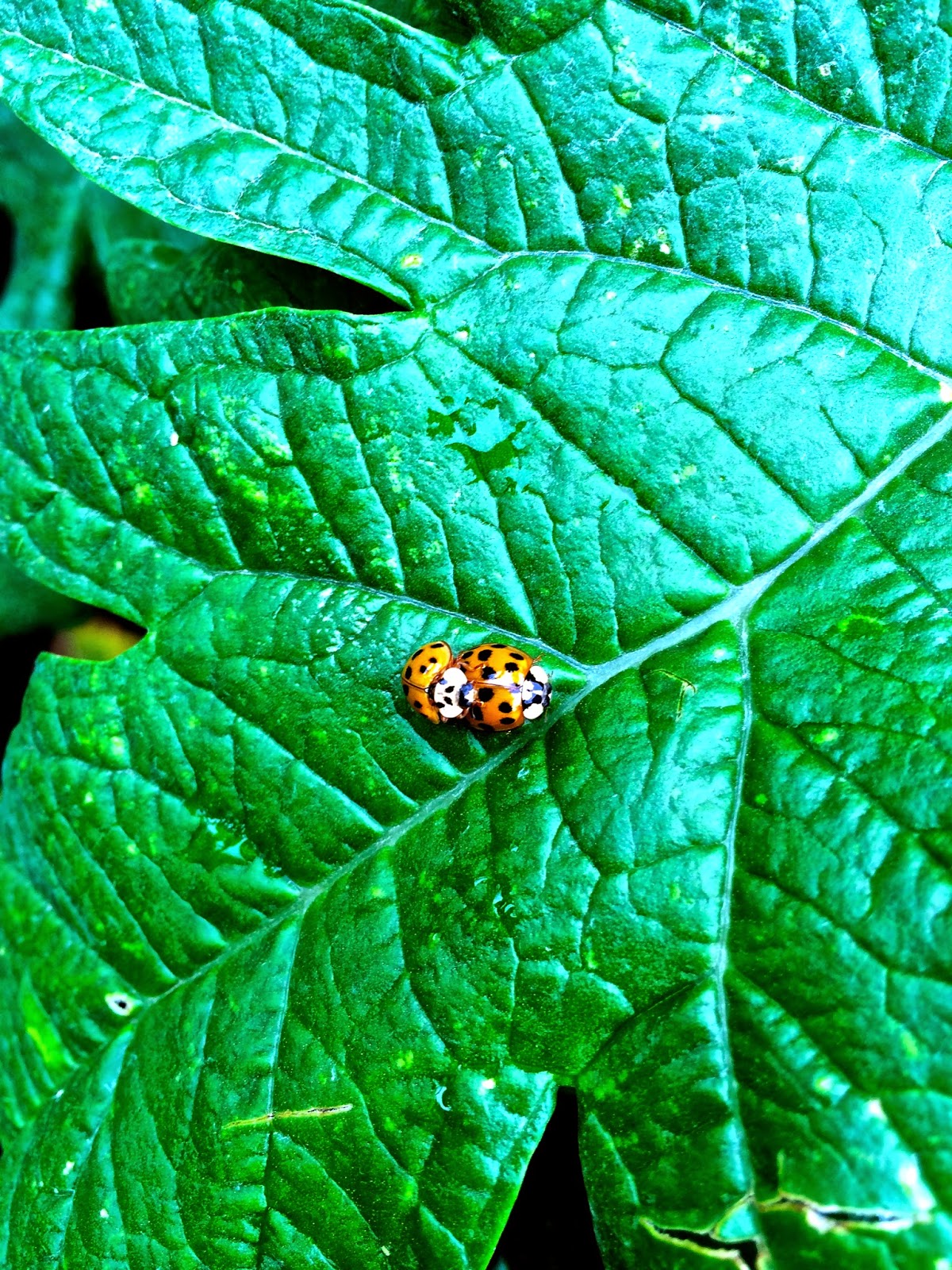Tour of Austin Garden Bloggers Fling’s beautiful gardens
I’m not sure I could pick a garden favorite at last May’s Austin Garden Bloggers Fling. The itinerary included a taste of unique ecclectic, xeric, formal, contemporary, and cottage style gardens — a smorgasbord of landscaping styles to delight the senses.
My favorite shot, this picturesque view of the Austin skyline served as the backdrop of a bed running along the back of the Burrus garden.
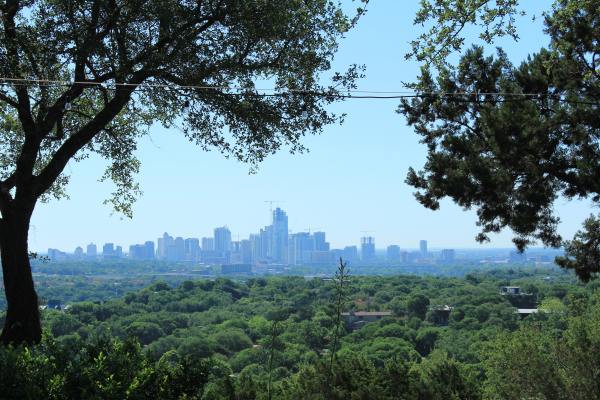
This rustic stone water trough at the front of the house is surrounded by lush shade plantings.
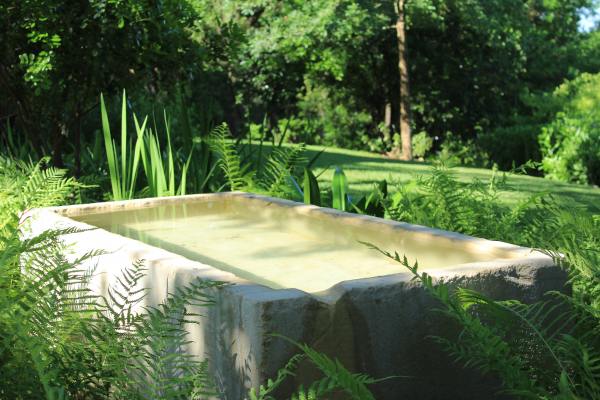
A quaint cottage-style garden house was built using rock from the property, incorporating vintage windows, and serving as home to beautiful climbing roses.
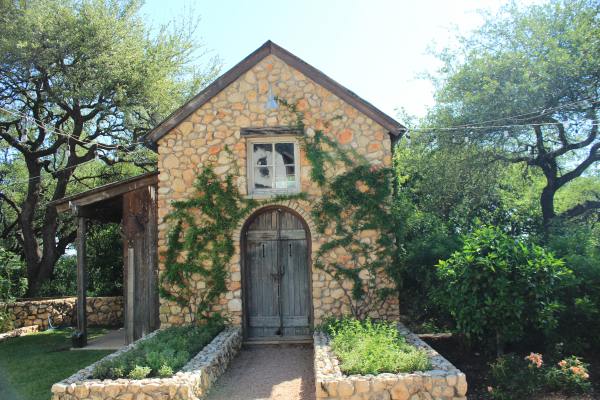
This sweet dog quietly sat guard throughout our tour.
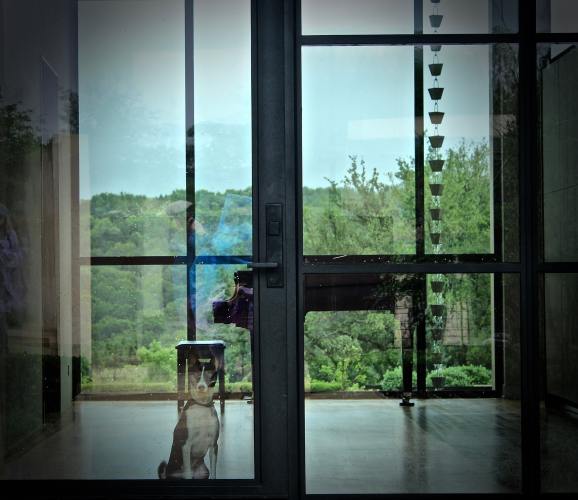
Flanked by a long driveway peppered with structural agaves and native trees, visitors get a glimpse into the xeric garden that awaits them above.
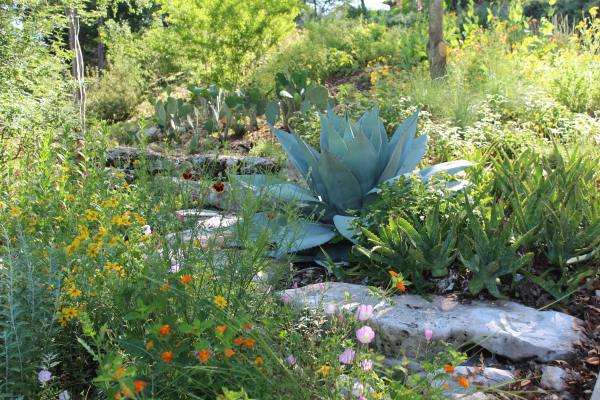
The Jamison garden, with its cottage ambiance, provided a winding path along the sides and the back of the garden. Filled with ephemera, water features, seating areas, and secret spaces, it’s charm was enchanting.
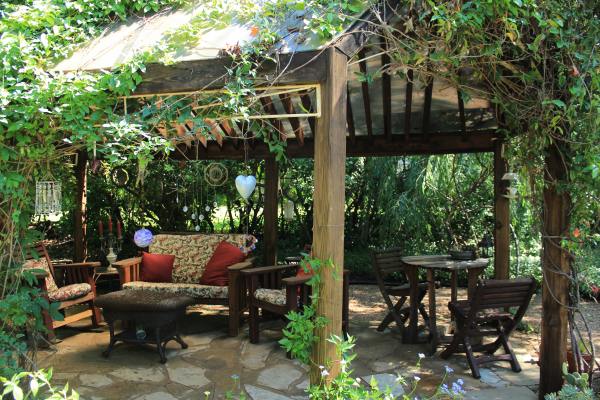
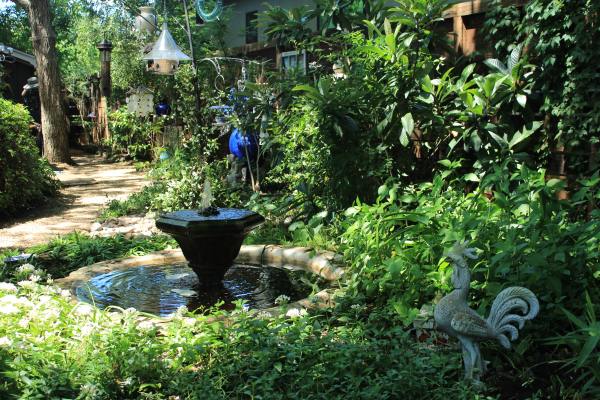
After running out of room in her own garden, Burrus began beautifying the land that divides her street that runs by an elementary school. With no means of irrigation, she filled it with xeric plants and provided seating areas for neighbors and school children to enjoy.
When we arrived at this garden, the torrential rain that drenched everyone at the Wildflower Center and at my garden had abated and slowed to a light sprinkling. Special thanks to Laura Wills , Austin Fling co-planner, for the insight to order colorful ponchos for this rainy day.

The weather didn’t slow the tour as bloggers walked toward the contemporary xeric garden filled with sculptural yuccas and agaves and Cor-ten steel elements.
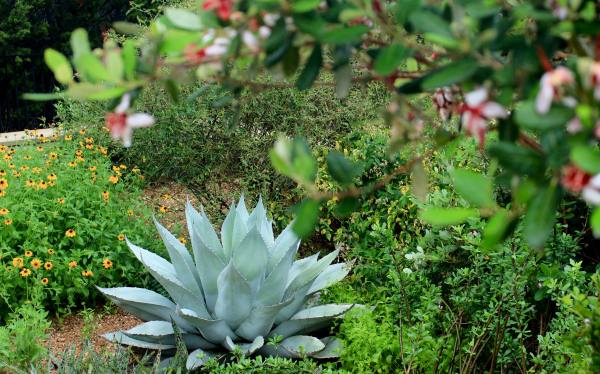
Stay tuned for more Austin Garden Bloggers Fling garden tour highlights.

